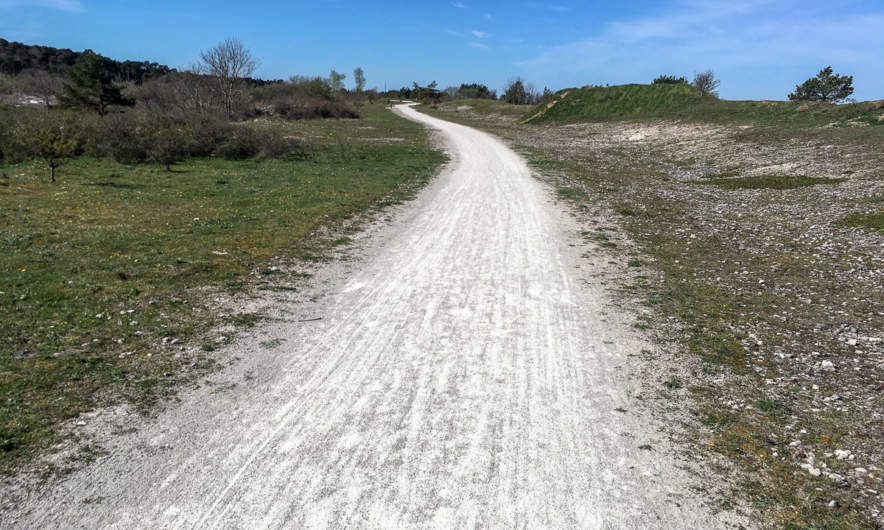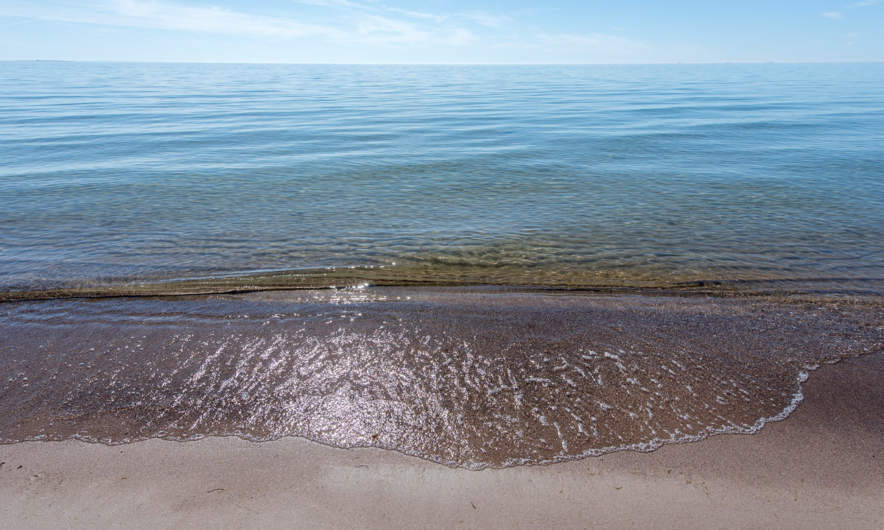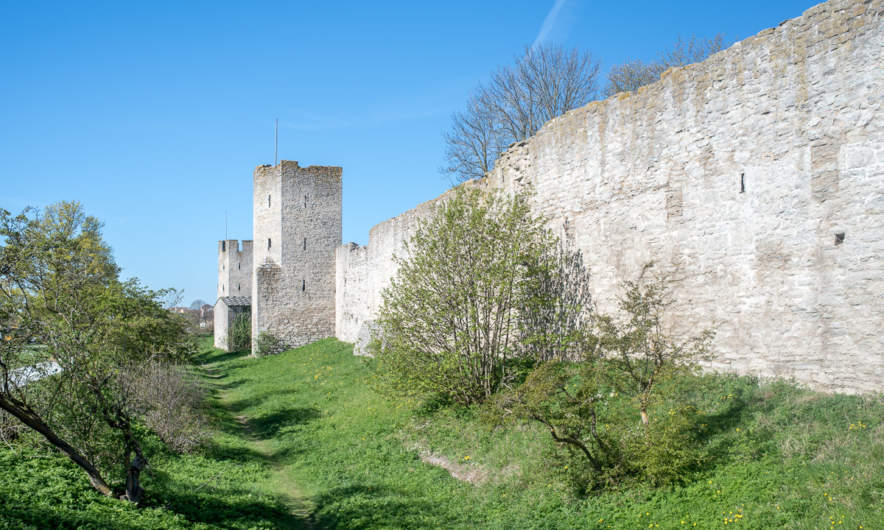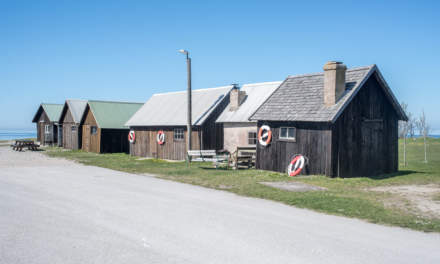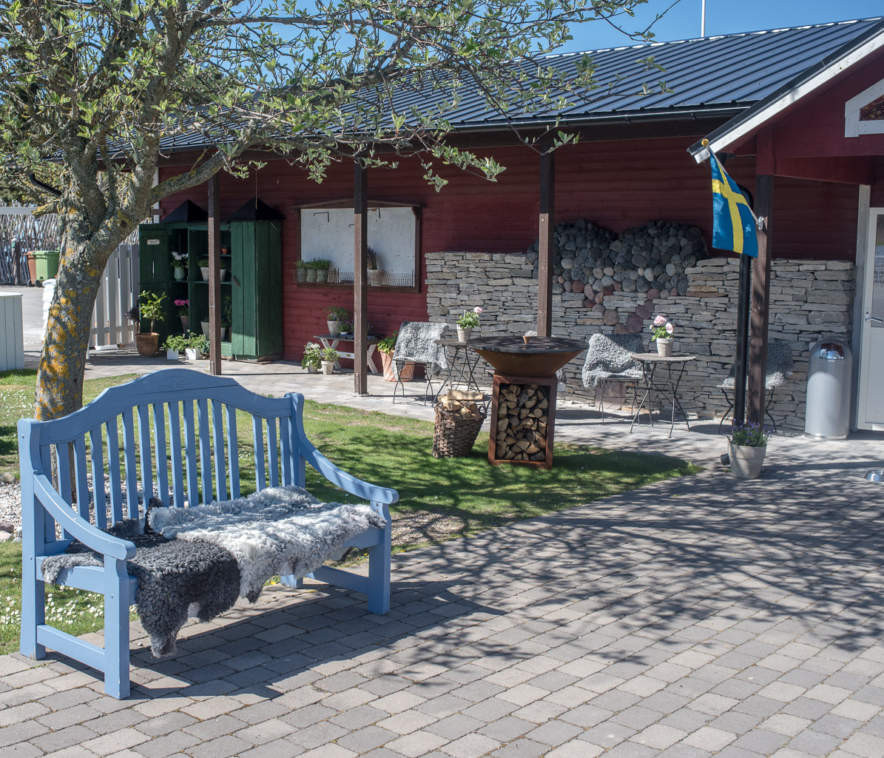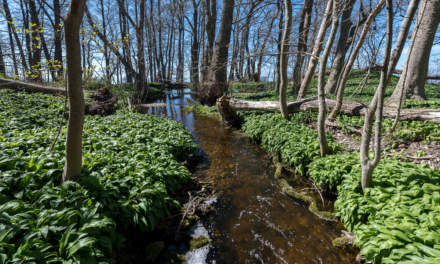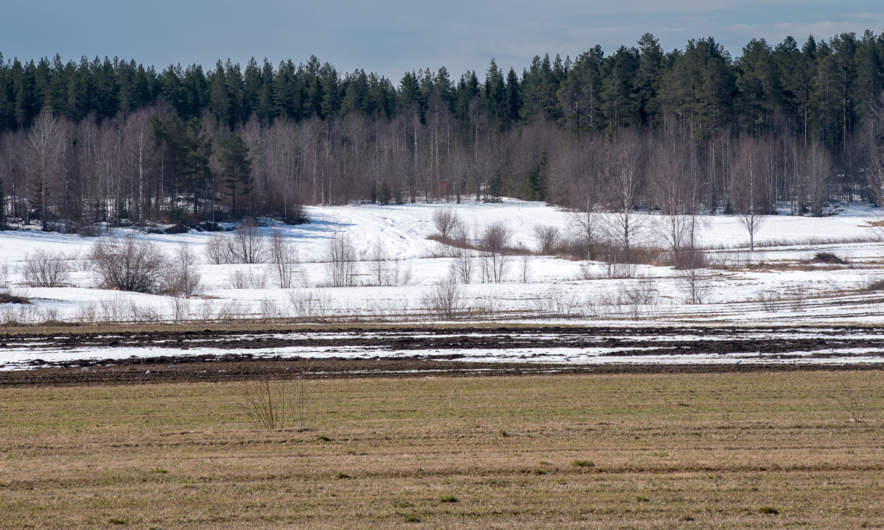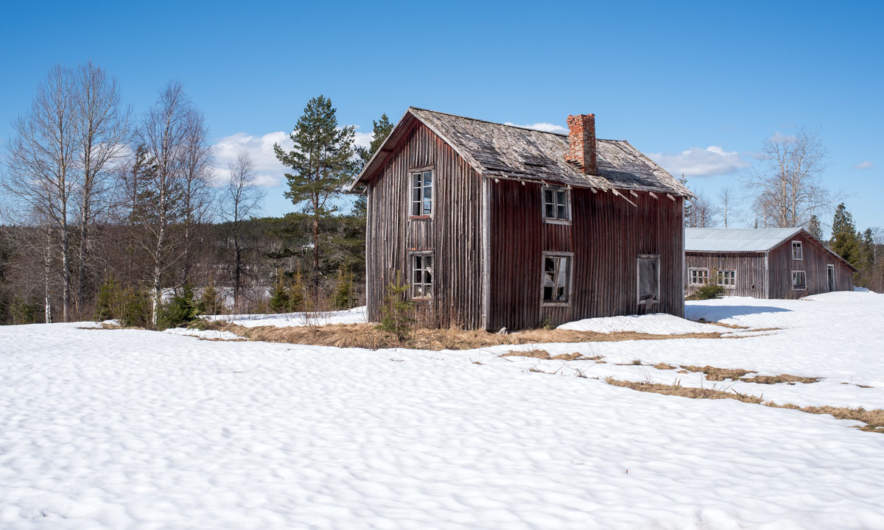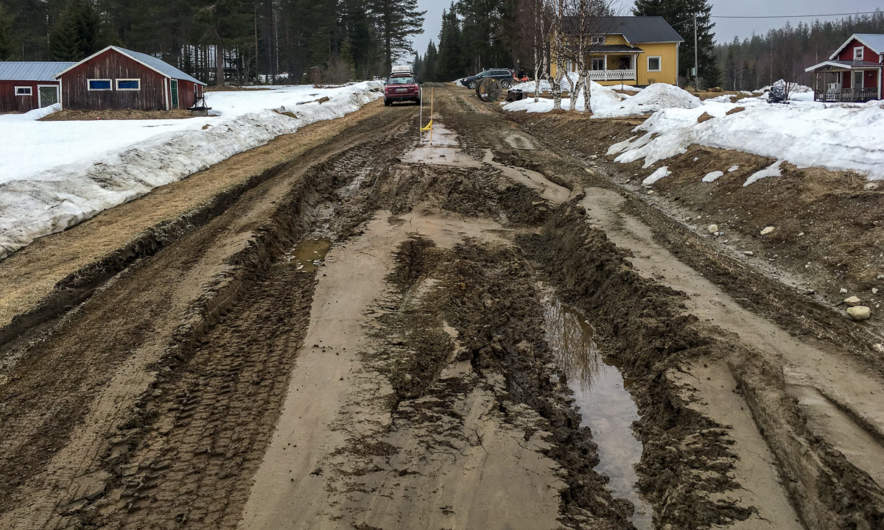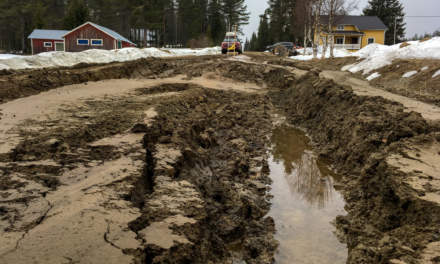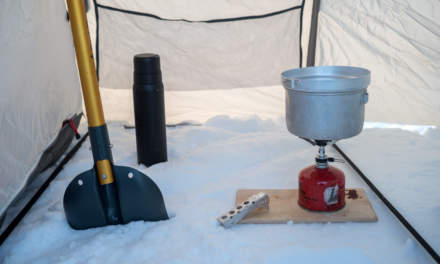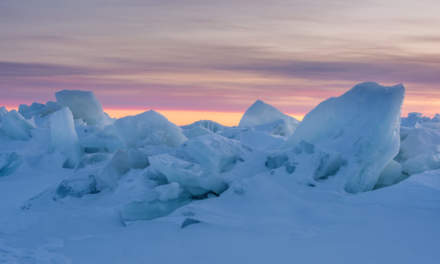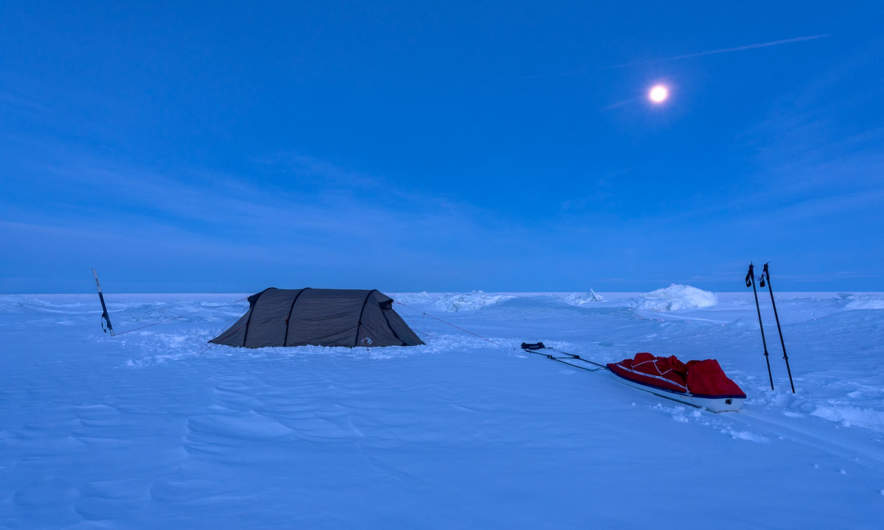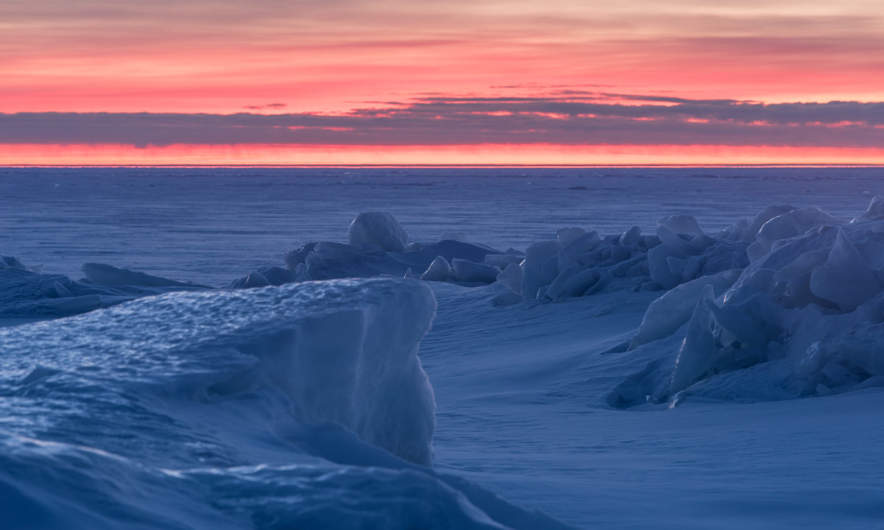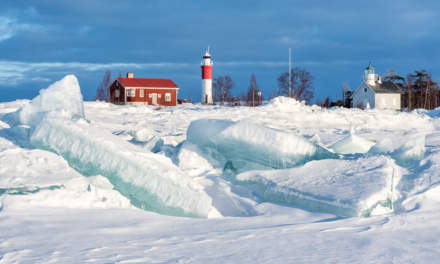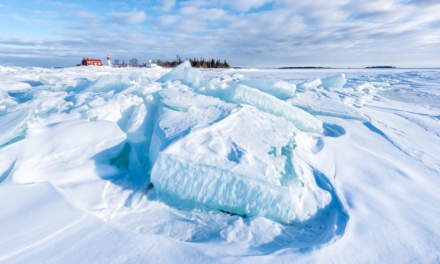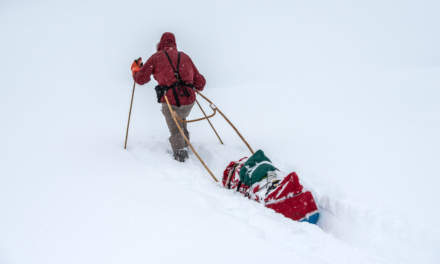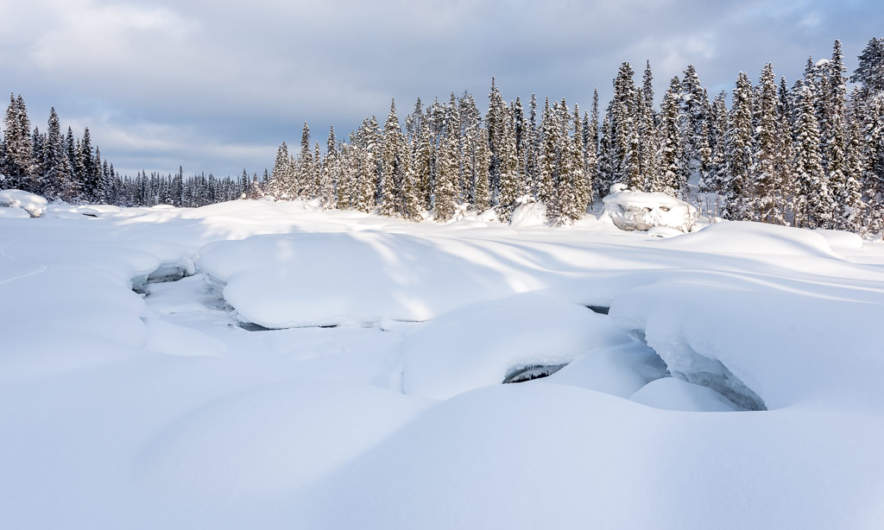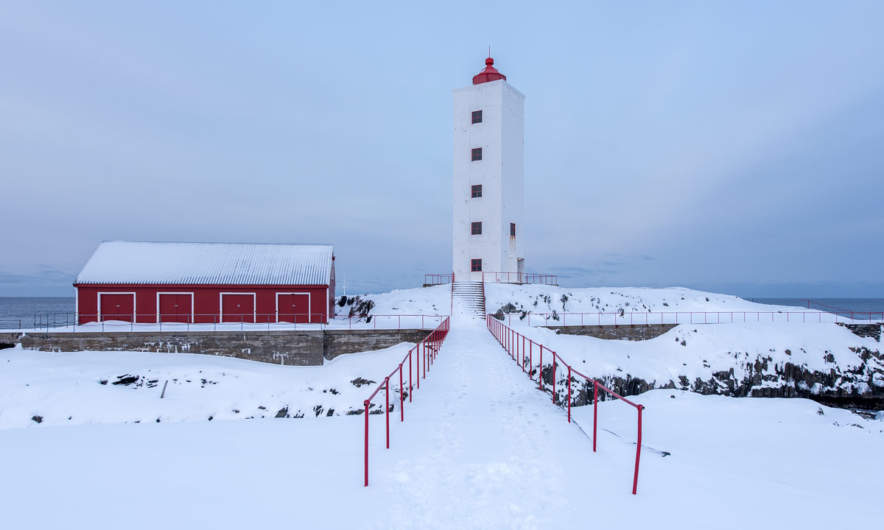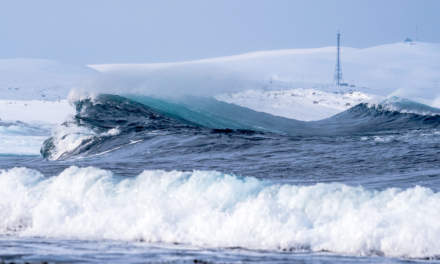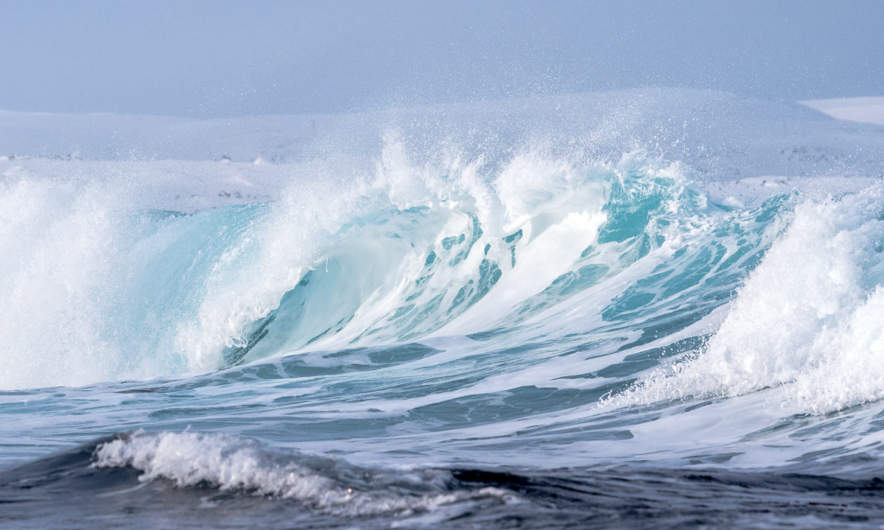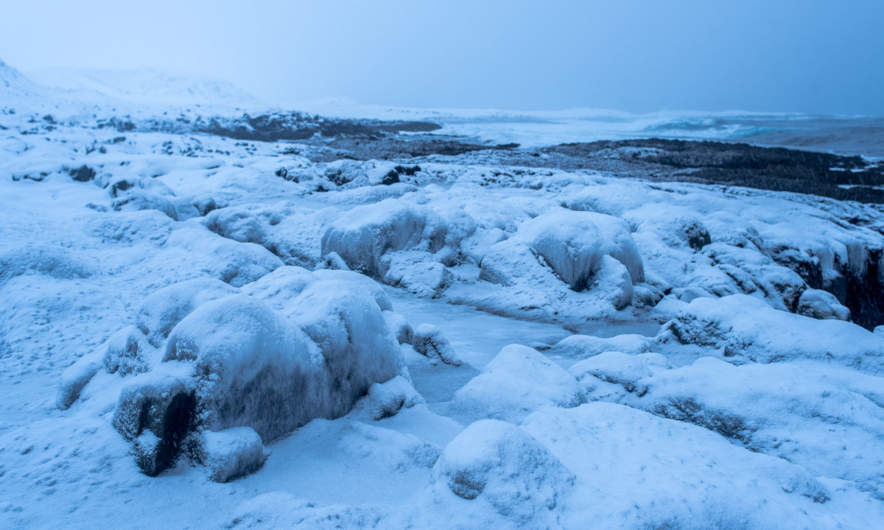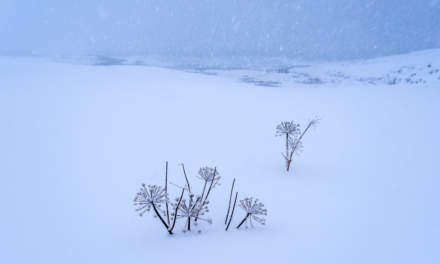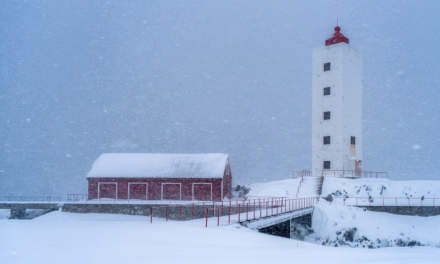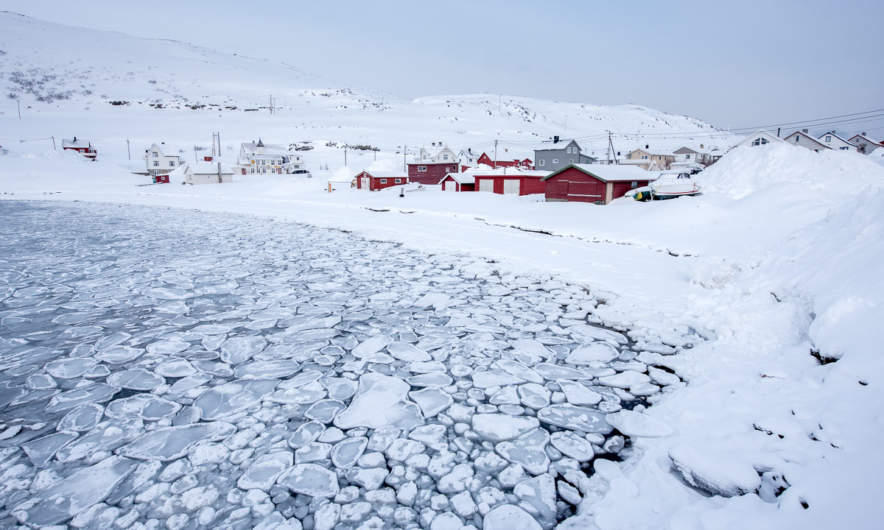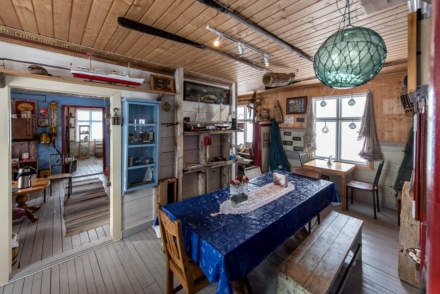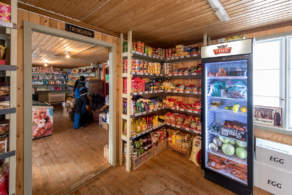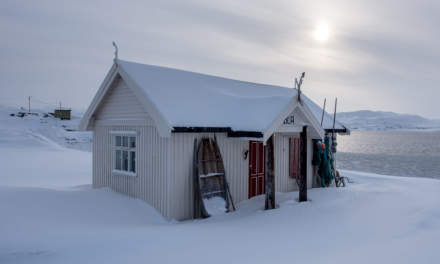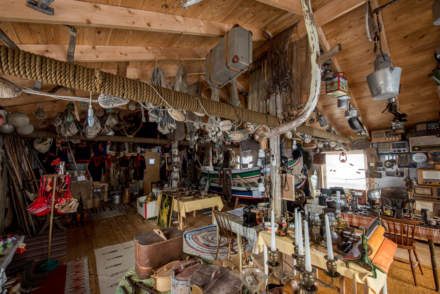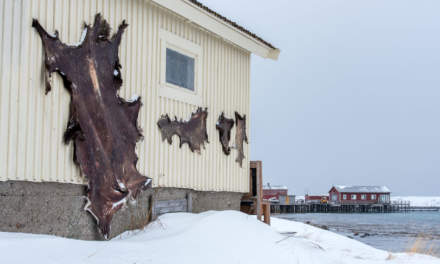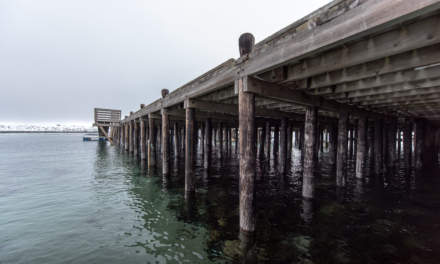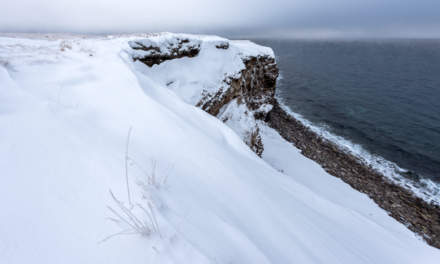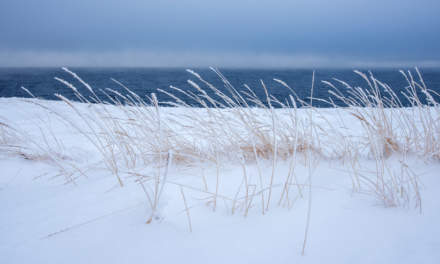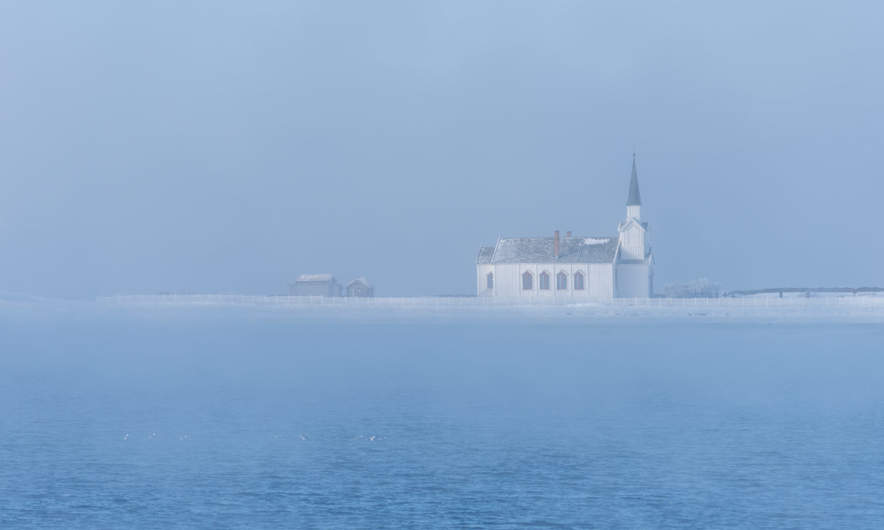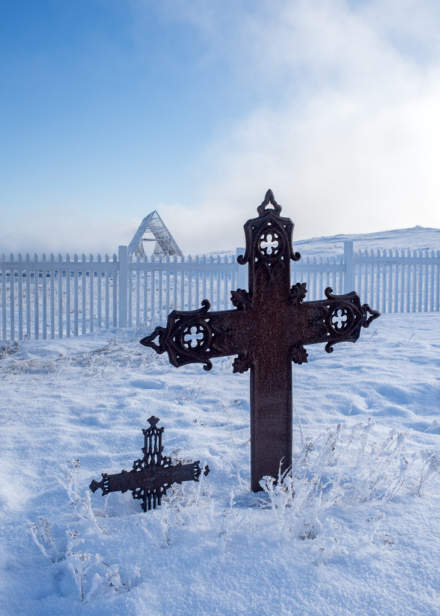This article is part of the series
“2018-02: Ski tour near Kvikkjokk”.
Day 13 to 15 of my winter journey 2018
(finally the last part about Jonas’ and my ski tour five weeks ago)
Tuesday, 13 February
I woke up in the cabin Tarrekaisestuga at 7:20. Some more centimetres of fluffy snow had fallen over night and it was still snowing slightly.
While Jonas and I had breakfast the snowfall intensified so that the mountains and the opposite shore of the lake Darrávrre were hidden by the falling snowflakes. Even the deep tracks of our pulkas from the day before had been snowed over and we couldn’t spot them anymore. We planned to gradually walk back on the other side of the lake and find a tenting place there. After breakfast we packed our equipment into the pulkas, cleaned up the cabin and started our tour by crossing the lake. It was still snowing quite heavily and on the lake it was quite windy, too.
It was not easy to find a path on the other side of the lake. The snow was soft and deep, some parts were forested quite densely and some passages were quite steep. At least for me, who lacked both power and general fitness for dragging a heavy pulka uphill through this sort of powdery snow where you sink in 20 to 40 cm with every step – with skis on!
Slowly and with many small detours we managed to ascent the southern hills until we reached the treeline where the terrain is more open and less hilly. We found a boulder where we found shelter against the wind. Here we took a snack: Chocolate, trail mix and hot tea.
We continue skiing slowly going uphill heading east. It stopped snowing and the wind dropped but the weather was still grey and dull. At least we could see the mountains again.
Suddenly we came to an abrupt stop. We stood at the edge of a deep, steep ravine impossible to cross. Such can happen if you do not make a detailed tour planning but just have a general idea of where to go.
After a while we started to look for a place to tent. First we followed the ravine that the river Áhkalmgårttje had cut into the landscape then we descended a bit to find a sheltered place between some birch trees. The snow was really deep and without skiers I sank up to my stomach into the fluffy snow.
Fortunately the snow was stable enough to build up the tent after we had trampling down it thoroughly with our skis.
Later in the evening: I wonder, why it is never completely dark. Is it still lights of civilisation reflected by the clouds? Suddenly something was flickering between the clouds. Is it a strong aurora? No, it’s just too vivid. But what is it? It was two snow mobiles that illuminated half the mountain landscape with their strong full beams. Slowly they passed on the lake below us.
Temperatures were round -10 °C, quite warm for a February night in the Kvikkjokk mountains. Soon I fell asleep.
Wednesday, 14 February
As usual I was awake quite early and I had a challenge: going on the loo. I just slipped into my warm mukluk boots, put on the down jacket and took toilet paper plus snow shovel with me. I went back on our track from our day before thinking it would bear my weight. It went well a few steps then I just fell through the snow and stood there, again up to my stomach in powder snow. This plan didn’t went so well. I climbed out of the hole, brushed off the snow of my long johns and looked for a better place. (I found it.)
This morning was even warmer with only -8 °C and quite foggy. Both wide angle lenses were completely fogged and it would take most of the day until I could make clear photos again. That’s what the morning looked like:
As usual we took it easy and started only at 11 o’clock. We descended through the hilly open woodland until we met the winter trail. Snowmobiles had used this trail not long ago and now it was quite easy – even if a bit boring – to get ahead. And after some time even the sun tried to twinkle between the clouds. The first time after many cloudy days we casted shadows again. And it was snowing at the same time.
I skied fast on the snowmobile trail where I could use cross country skiing techniques. Too fast for Jonas and too fast for myself, too. I couldn’t hold the tempo and after some time I was really exhausted – not for the first time on this tour. On the other side it was already afternoon and we were already quite near Kvikkjokk, where I had parked the car. Jonas found a nice clearing in the forest were we tented the last time on this tour. And even the sky cleared up a bit.
Thursday, 15 February
We do not know if we missed northern lights while we slept. The morning however the sky was grey and overcast again and half a centimetre of dust-like snow covered the tent. (And my green anorak that I had forgot to put into the pulka.) Today we would have it easy. Just some kilometres skiing on the winter trail that means, following the snowmobile tracks, mostly on the river.
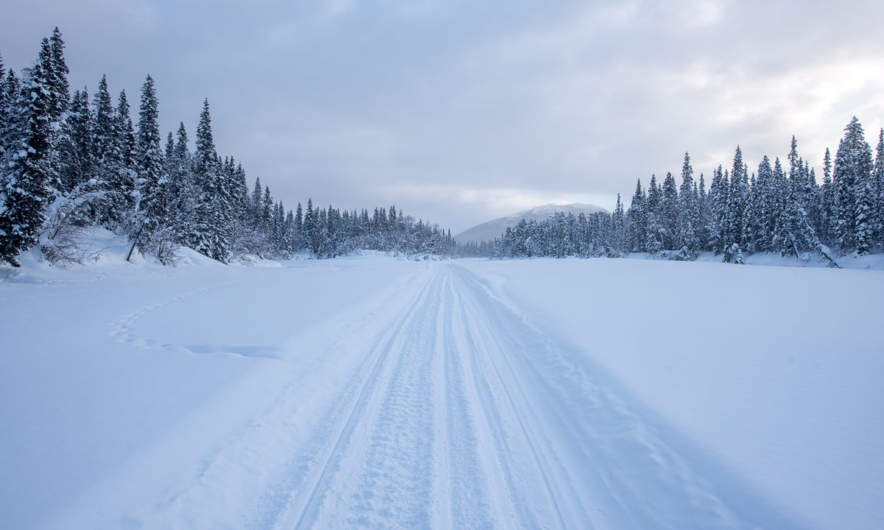
We passed the place where we had left the very same river the very first afternoon to find our tenting place. Here, in the “valley” much less snow had fallen and our deep tracks climbing up the steep riverside were still visible. Now it wasn’t long to the private shortcut that we had used on our tour start. When we came to this place, a snowmobile approached from that very shortcut, a man waved at us and made a turn to talk to us. It was Björn, the very same local that we met when we started our tour! He was quite eager to hear about our experiences even though he was a bit in a hurry. He also told us about two other Germans that he just had met at the very same parking place where I had parked my car.
The last kilometres, crossing a small frozen river …
… following the shortcut (which is quite long for being a shortcut) and finally we arrived at the parking place. We hadn’t much luck with the weather, we didn’t ski long distances, but it was an awesome tour anyway. Thank you, Jonas!
Plans for the next ski tour:
- be better trained and exercised (!!!)
- have less equipment (!!)
- have (partly) better equipment (!)
Photo #6 and #9 in this blog article are made by Jonas Balbasus.
At the parking place we met Dan and Helen, also from Germany, who just were on the point of starting a much longer tour within less than two weeks: Following the Padjelanta, crossing the Sarek, returning on the Kungsleden. A very ambitious tour in my opinion. But they made it as you can read in Helen’s blog:
Winter ski tour through Sarek National Park – Sápmi / Swedish Lapland
